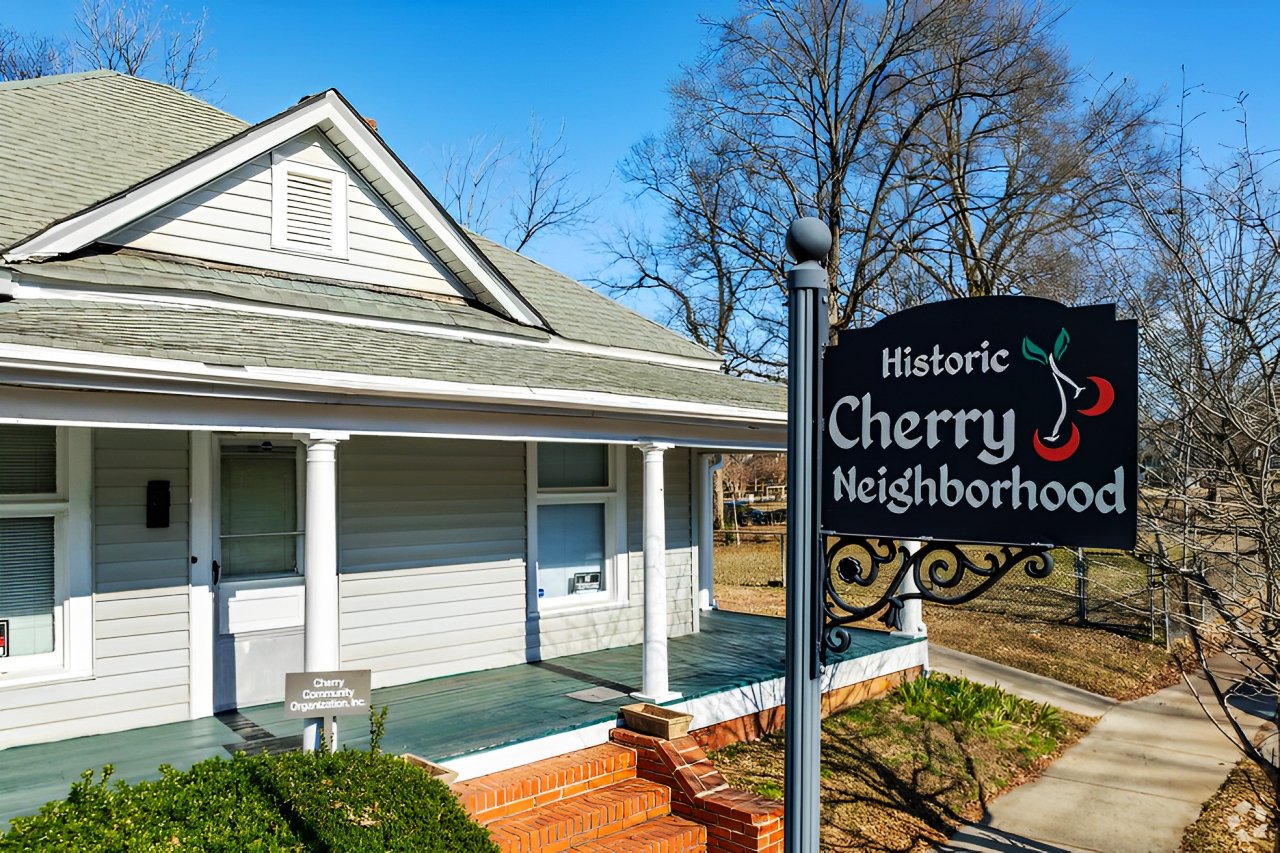
The Cherry Community is one of Charlotte’s oldest and most historically significant African American neighborhoods. Established in 1891 by John Springs Myers and Mary Rawlinson Myers, Cherry was the first community in Charlotte designed to provide homeownership opportunities for Black laborers and working-class families. The neighborhood was developed from the Myers family’s thousand-acre cotton farm, located just outside Charlotte’s city limits. Contrary to local belief, Cherry was not created as a servants’ community for Myers Park; in fact, it predates the development of Myers Park by at least 20 years.
Cherry’s development was distinct from other African American neighborhoods due to its inclusion of essential community amenities. Morgan School (1925) and Morgan Park (1927) were constructed on Baxter Street, providing educational and recreational spaces for residents. In addition to these, the neighborhood featured several churches and small local stores, many of which still exist today. The community’s tree-lined streets and abundant cherry trees, which once covered the hillsides, are said to have inspired its name.
The History and Legacy of The Cherry Community
The Cherry Community Organization
Founded in 1968 as the successor to the Cherry Community Development Association, the Cherry Community Organization (CCO) is a nonprofit dedicated to preserving the neighborhood’s residential character, safety, and stability. CCO plays a vital role in maintaining affordable housing for low and moderate-income individuals and families, specifically those earning less than 60% of the Area Median Income, as determined by the U.S. Department of Housing and Urban Development (HUD). The organization remains steadfast in its mission to protect Cherry from speculators interested in turning a quick profit through destruction of affordable housing in favor of housing that not many people can afford.
Throughout its history, CCO has purchased and maintained affordable properties while fostering social programs for residents. At its peak, the organization owned up to 125 affordable housing units in Cherry. It has also provided community services such as a local “Meals on Wheels” program, ensuring that residents have access to essential resources.
Over the years, Cherry has collaborated with various community organizations, including the City of Charlotte, Mecklenburg County, and Inlivian, to uphold its long-standing legacy. Through these partnerships, Cherry continues to be a vibrant and historically rich neighborhood, committed to preserving its cultural heritage and supporting affordable housing initiatives.
Our Leadership
The Cherry Community Organization is a 501c3 nonprofit organization that is led by a volunteer board of directors. Members reflect the diverse character of Cherry - and several have lived in the neighborhood for generations!



